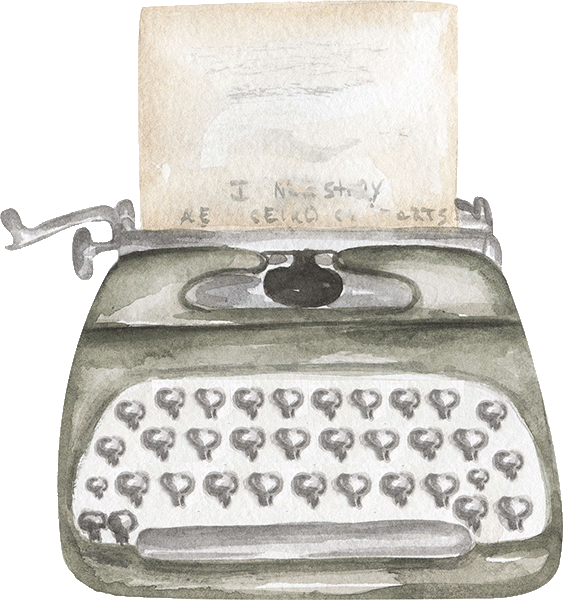There are punctuation rules you might not have run across in your essay writing – or at least you didn’t probably run into it often. If you read a lot, you’ve seen it … but do you remember?
I had to learn how to punctuate dialogue after I started writing, and it wasn’t necessarily the easiest thing ever. There are way too many rules. And there was never one article I read that summed them up (though I’m sure many such exist #toolazytoGoogleit).
So here are the basic (and slightly more advanced as far as they go) rules of punctuating dialogue all in one place for your writing ease!
Without further ado …
How to Punctuate Dialogue for Beginners
(and people like me who never paid attention)
When learning how to punctuate dialogue, it’s important, of course, to define what dialogue is.
Dialogue
“Conversation between two or more people as a feature of a book, play, or movie.”
This is the talking characters do – basically, anything they say out loud. This does not include thoughts, feelings, etc. that the characters experience. Things like telepathy, texting, passing notes, etc. are usually written differently.
Direct vs. Indirect
Only DIRECT dialogue requires punctuation. Indirect dialogue requires no punctuation. For instance:
Indirect dialogue: Kelly said that learning to punctuate dialogue is easy once you get used to it.
Direct dialogue: “Learning to punctuate dialogue is easy once you get used to it,” said Kelly.
With that definition out of the way, let’s move on to the basics.
The Basic Rules for Punctuating Dialogue
“Well,” said Kelly, “basically, you start with those little double dashes which are called quotation marks. The dialogue goes in between a set of them.”
As you can see, when you write something like “said Kelly” and it’s still part of the sentence, you use a comma after “Well” and have “said” be uncapitalized.
In addition, when the sentence continues (e.g. “Well, basically, you start …” is all the same sentence), the first letter of the first word is not capitalized (meaning basically is uncapitalized).
However, if a dialogue tag (e.g. said Kelly) separates two sentences, you do not use a comma.
Examples:
“The quick brown fox,” said Kelly, “ran over the lazy, fat dog.”
“Well,” Kelly murmured, “being a writer is super hard.”
“Writers are awesome,” said Kelly.
Kelly said, “Don’t you dare poison my coffee.”
“I am a writer,” said Kelly even though that was rather obvious. “I love writing.”
“Let’s be friends,” Kelly said with a forced grin. “I need a little more pain in my life.”*
*Let me here note that I do not hate people … I just don’t know how to talk to them.
Quotception
For a quote within a quote, you use single quotation marks. For instance:
“Kelly says, ‘For a quote within a quote, you use single quotation marks,'” said Angela. “Makes sense to me.”
Don’t overdo this, but do remember to do it whenever someone is giving a direct, word-for-word quote. Don’t use them for indirect quotes (see above).
Examples:
“She said, and I quote, ‘I don’t want to eat a pound of candy.’ What an idiot,” said Kelly.
“As one great comedian said, ‘Those are my principles, and if you don’t like them … well, I have others.'”
“To quote Hamlet, Act III, Scene III, Line 87, ‘No.'”
But what about actions?
“Sometimes you have actions in between sentences.” Kelly lifted a huge boulder that only someone of incredible strength could possibly lift. “Then you just continue talking like before.”
As you can see, when you have a two separate sentences, it’s pretty cut and dry. No commas – just periods. In fact, you never use commas for actions unless they’re preceded by a dialogue tag:
“I just don’t like Pumpkin Spice is all,” Kelly said, sipping a cup of heavily-sugared coffee.
But …
What if the action is in the middle of a sentence?
“I am”—Kelly scratched her head—“a writer.”
Those lines are called em-dashes.
A regular dash looks like this: –
An em-dash looks like this: —
Em-dashes can be created by holding down the Alt key and typing 0151 on your keyboard, but I’d recommend making it so whenever you create a double dash (–) on your writing program, it autocorrects to an em-dash.
You probably won’t use this a ton, but sometimes it can bring the perfect emphasis to a conversation.
“You said”—Kelly pounded her fists on the table—”that you would comment on my blog post.”
“Will you”—he knelt on the sandy beach—”marry me?”
Note that because it’s a continuing sentence, there is no capitalization beyond the first word except for names.
Interruptions
Em-dashes are also used for interruptions. For instance:
“What do you want to—”
Kelly threw a cup at Angela. “STOP THE PRESSES! I’m going to rudely interrupt your conversation.”
Exclamation and question marks, though?
Oh, right!
“I’m so excited!” said Kelly.
“Would you like to buy six copies of each of my books?” Kelly asked.
So none of that comma nonsense in these cases.
TTFN!
~Kellyn Roth~
p.s.
Do you know how to punctuate dialogue? Was any of this new to you? Did I get anything wrong? Or miss anything?



14 Responses
OH MY WORD I LOVE THIS POST SO MUCH.
When you’re a grammar stickler like me, and you like to write which means you like to read… 😒 Sometimes it gets on your nerves. Like a lot.
That being said, this is something all writers should know and know welllllll. *cries* PEOPLE PAY ATTENTION TO STUFF LIKE THIS PLEASE
Also funny thing, haha, I have been told I have a sort of dramatic flair when it comes to writing. I overuse em-dashes and ellipses. Especially em-dashes. Then I go back, look at them, and think, “😶”
Okay I’m done now. 😀 all that to say I loved this post!
THANK YOU!
I agree! It seems to be tough for some younger writers (… or even older writers) to get a grasp on!
YES! That’s me, too! I guess we can be em-dash and ellipse buddies …? Because I definitely overuse them.
“I’m flattered. Lovely post, as usual, but if you ever throw a cup at me again, there will be consequences,” said Angela, quickly tying up the presses and cleaning the mess.
“Hmm, well.” Kelly crossed her arms over her chest then reluctantly helped clean up the mess. “I suppose I won’t.”
“Thank you…” Angela hesitated. “Now might be a good time to tell you of the reporters I tied and hooded in your basement.”
Kelly blinked. “Well, at least I can count on someone to keep my secrets.”
Dialogue with bad grammar is such a turn-off in books 😖
“She said, and I quote, ‘I don’t want to eat a pound of candy.’ What an idiot.” <–ahaha i love this
I agree!
LOL, yeahhhh … 😉
This is so good! And I loveddd all the example dialogue. XD I really could’ve used this post back when I started writing my first book. I feel bad for my beta readers.
Haha, thanks! Ahhh, yeah, it’s so hard at first! I don’t think I kept a single rule when I was first writing …
Kell, you should write English textbooks!! This stuff is ingrained in me from schoolwork but not nearly this fun!
Awww, thanks! I think I’d get bored after a bit, but it would be interesting for sure! 😛
“Let’s be friends,” Kelly said with a forced grin. “I need a little more pain in my life.” – Haha lol. XD
This post is super helpful! I never actually learned most of this haha, I just picked (most of it) it up along the way. XD
LOL! Yeahhhhh … 😉
SAME!